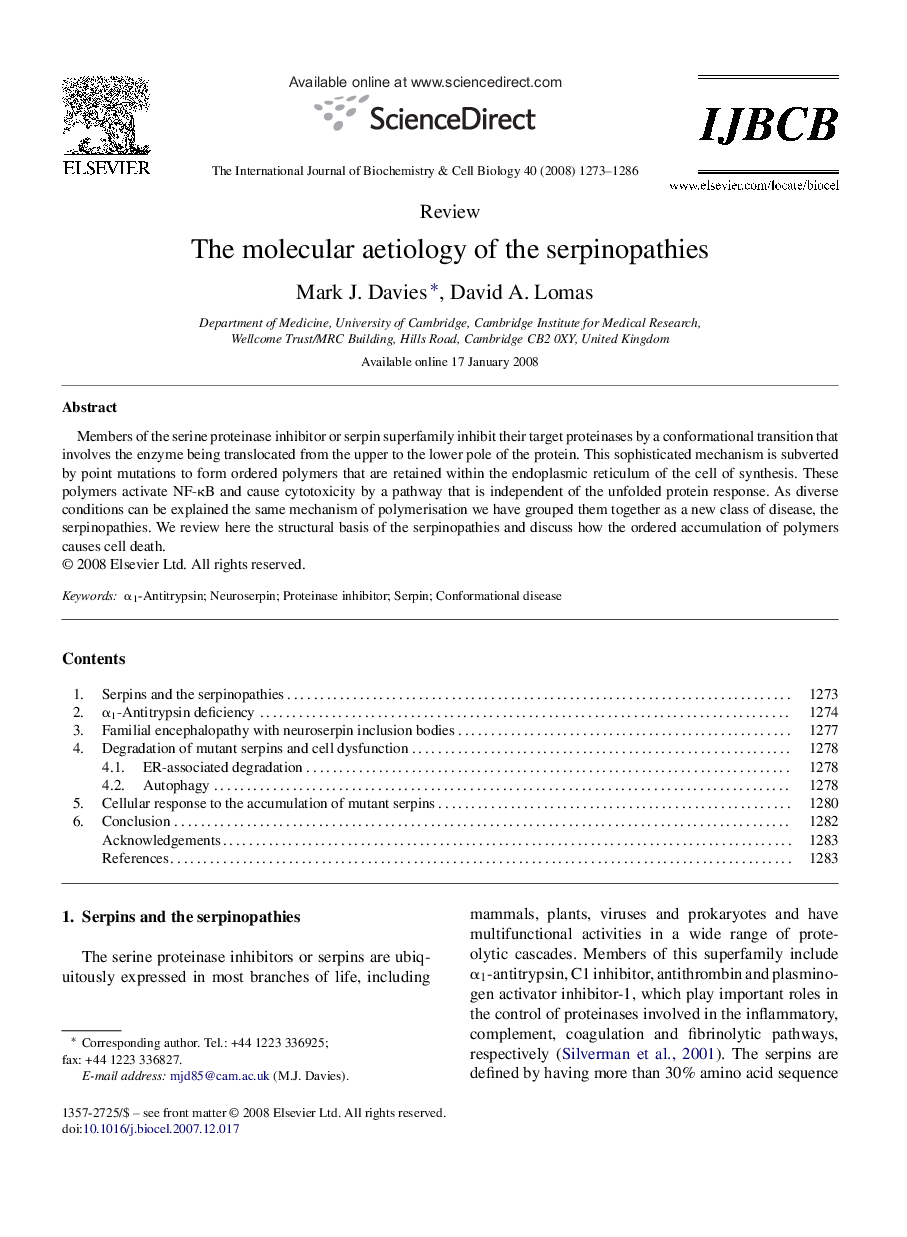| Article ID | Journal | Published Year | Pages | File Type |
|---|---|---|---|---|
| 1984960 | The International Journal of Biochemistry & Cell Biology | 2008 | 14 Pages |
Members of the serine proteinase inhibitor or serpin superfamily inhibit their target proteinases by a conformational transition that involves the enzyme being translocated from the upper to the lower pole of the protein. This sophisticated mechanism is subverted by point mutations to form ordered polymers that are retained within the endoplasmic reticulum of the cell of synthesis. These polymers activate NF-κB and cause cytotoxicity by a pathway that is independent of the unfolded protein response. As diverse conditions can be explained the same mechanism of polymerisation we have grouped them together as a new class of disease, the serpinopathies. We review here the structural basis of the serpinopathies and discuss how the ordered accumulation of polymers causes cell death.
